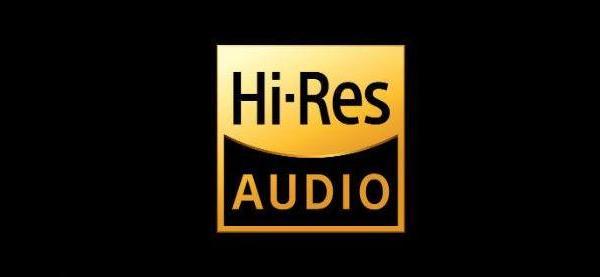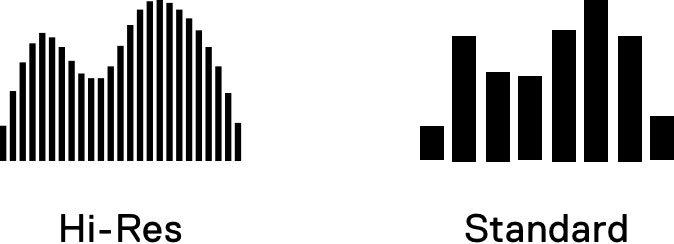What is Hi-Res Audio?

Heard about Hi-Res audio and wondering what the fuss is all about? We’ve broken down everything you need to know so you can decide if it’s what your music collection needs.
Hi-Res Audio: Next-gen sound
Just as 4K and HDR have become the buzzwords of TVs, Hi-Res is the must-have standard for audio gear. You may even have noticed a little gold and black ‘Hi-Res Audio’ logo alongside some products, as if it’s an official seal of approval. But is Hi-Res Audio really such a big deal?
It can be if the conditions are right, but there’s a lot of misleading information out there, so here’s what you need to know.
What is Hi-Res audio?
Hi-Res audio describes digital audio files of better-than-CD quality. They are also higher-quality than those currently delivered through streaming services like Apple Music and Spotify. Hi-Res hardware is designed to handle these enhanced files.
In Hi-Res phones and music players, that handling is literal. Not everything can manage such audio data. But in ‘normal’ headphones and speakers, which are analogue devices, it tends to denote a frequency response good enough to let you notice the difference.
To enjoy Hi-Res audio content, you need hardware that can handle these formats. That’s why the Japanese Audio Society created the Hi-Res Audio certification program, to help consumers understand which products have proven capability to receive and play Hi-Res formats at full quality. This means that a DAC (digital analog converter) must be able to process 96 kHz, 24 bit, and that an amplifier and headphones or speakers must have frequency range out to 40,000 Hz.
Hi-res audio does come with a downside though: file size. A hi-res file can typically be tens of megabytes in size, and a few tracks can quickly eat up the storage on your device. Thankfully, storage is much cheaper than it used to be, so it’s easier to get higher-capacity devices. That said, the size of the files can still make hi-res audio cumbersome to stream over your wi-fi or mobile network.
Sampling rate
Just like digital video is made up of a series of still images played quickly enough that you see them as continuous, digital audio is comprised of many data points played back at an extremely fast rate. Each one of these audio snapshots is called a sample. Audio sampling rate (in Hertz – Hz) tells you how many samples per second are played, so the higher the number, the greater the resolution. CD-quality audio (typical for most standard music, games, movies) for example uses a sampling rate of 44,100 Hz, or 44,100 samples per second, whereas Hi-Res formats use 96,000 or higher, so more than double!

Great…right?
Well, yes. More samples per second means the audio has a higher resolution. It also means that the audio can contain higher frequencies. Due to something called the Nyquist Theorem (which I will not get into here, go ahead and Google it if you want to nerd out) your highest frequency is always limited to your sampling rate divided by 2. CD quality audio is limited to 22,050 Hz, while Hi-Res audio can produce out to 48,000 Hz or higher.
0 Comments